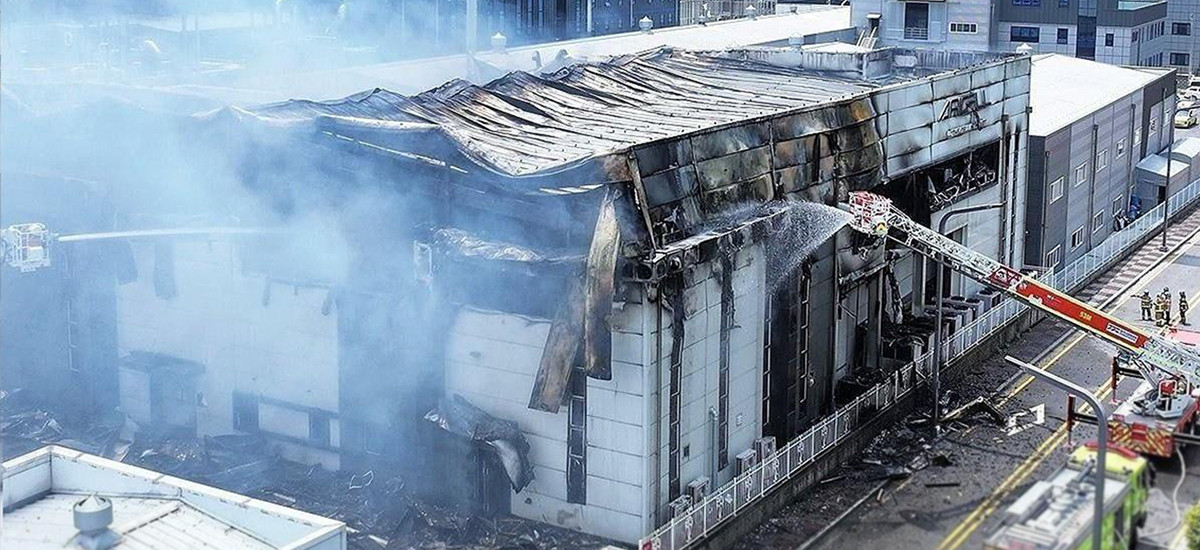1/10/2024
Characteristics of Stored Batteries
“Primary” batteries, also known as “primary cells”, are disposable batteries. Since the effect of the chemicals that produce electricity in primary batteries cannot be reversed, they cannot be recharged. Batteries that can be charged and used more than once are called “secondary” batteries.
When we think of lithium batteries; we usually think of cell phones, laptops and electric vehicles that we use in daily life and their rechargeable secondary type batteries. However, in addition to these areas; Lithium-based primary type batteries are also produced for use in applications such as sensors, radio communication devices, medical devices (such as pacemakers). These batteries are generally preferred for their high energy density and long life. These characteristics may be one of the reasons for the rapid spread of the factory fire. Lithium salts, which are flammable and explosive, are used in the production of lithium batteries. These factors emphasize the importance of Lithium battery safety and proper storage practices.
Main Causes of Battery Fires
- Thermal Abuse: Ignition of the battery cell by external heat or flame sources.
- Mechanical Abuse: The ignition of the battery cell due to damage caused by physical factors such as dropping, crushing and puncturing.
- Electrical Abuse: The ignition of the battery during charging due to factors such as charging above its capacity, exposure to high voltage, charging or discharging too fast.
What is thermal runaway phenomenon?
Any of the abusive factors that can occur on batteries can destabilize the structure of the battery, causing it to start generating heat by chemical reaction. This can lead to “thermal runaway”, which is an uncontrolled reaction. If this reaches a certain level, it triggers chemical reactions that generate more heat and pressure, causing a positive feedback loop. This continues until the battery unit completely burns itself out.
What can be done to prevent fires in lithium battery factory warehouses?
1. Passive fire safety measures:
To prevent loss of life in case of fire; passive fire safety measures, which are the elements of architectural fire safety, must be fully implemented. These include:
- Personnel emergency evacuation planning; escape distances and suitability checks of exits,
- Correct design and applications of emergency lighting and guidance systems to be used during evacuation,
- It is the determination of the fire compartment requirements that stops the spread of fire and/or explosion and confirming that it is correctly implemented. In order to provide fire compartmentation, all walls, floor and ceiling of the space must be at the fire resistance level specified by the regulation and all openings passing through the space must be isolated with appropriate fire resistant devices and products (such as fire doors, dampers, passive insulation applications).
2. Active fire safety measures:
- Selection of extinguishing systems suitable for the storage area: It is the use of appropriate extinguishing systems considering the warehouse ceiling height, storage type and chemical content of the batteries stored. In battery fires, even if complete extinguishing cannot be achieved until the product consumes itself; the fire can be taken under control and prevented from spreading by suppression.
3. Taking Warehouse Monitoring and Tracking Measures:
- It is essential to monitor the temperature of batteries; limit the storage charge rate, avoid overcharging and keep the ambient temperature within a safe range.
- Proper ventilation, early detection systems and emergency response plans can also help mitigate the consequences of thermal runaway if it occurs.
- Thermal imaging can be a useful tool to monitor the temperature of battery cells and prevent thermal runaway
- The storage space must not be used for other purposes and battery units must not be stored externally (mixed storage).
In order to ensure fire safety at this level; it is necessary to have a serious command of current studies and international regulations as well as our national fire regulations. At this stage, we are always with you as Efectis Era Avrasya to ensure fire safety with our engineering services.

